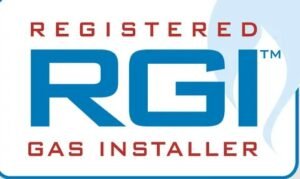The Guide to Shower Pumps Installation
- Admin
- May 7, 2025
Shower pumps installation is what most homeowners should consider to improve their shower performance. We know and understand that most people want their shower trouble-free!
Here are the rules when you are planning to install shower pumps.
Make sure there is enough pressure from the tank to fire up the pump when the tap is opened. If installing the positive head shower pump that has minimum inlet pressure, it should be about 2 meters. You can work this out by measuring the length of height from the base of the cold water and the water level of the water tank. If it is less than of what we mentioned, you may not obviously get the 0.5 liters per minute that are usually needed to activate shower pumps.
Take note, the cold water header tank must be at least 50 gallons capacity to maintain the supply through the hot water cylinder as well as the shower pump.

Fitting a Shower Pump
If you plan to place the shower pump, place it where it can access. This way it is easier to clean the filters later on. It is good if you place the pump under the bath but ensures the tool can use to open it so can access to the pump.
Ensure the pump is not covered or putting to risk by being the cover. If in case this will happen, then the motor could be overheating and this will cause serious damage to the pump. This is essential if you plan to have the shower pump install inside in an airing cupboard.
Moreover, the shower pumps should not expose to a very low temperature. Thus, ensure the location you are planning to place it to guarantee you to be frost-free.
Somehow for your safety, do not ignore the proper installation of electrical devices. To follow the wiring procedures of the shower pumps, you must place it at least 60mm away from the shower basin.
Ensure the pump connected to the house electrical supply from a 230v flexible on the main ring. Make sure it not connected to the supply for hot water cylinder immersion heater. Also, with the high load installation which required supply.
The shower pump can be nosier as people expected. If you can’t stand the noise you can reduce it by sitting it on a small concrete foundation for about 50mm thick.
If in case you will place it on a concrete building block this will do the same. Another thing is never screwed you shower pump to the floor. You are able to separate the water supply both to and from the pump. You can fit the 22mm full bore isolating valve to the water pipe where it supplies the pump.
Pipework Installation

Contact Dublin Shower Pumps
(01) 548 9868
+353 86 374-8000
contact@dublin-showerpumps.ie
93 Avonbeg Gardens Tallaght D24 F3CP Ireland
Opening Hours
SUNDAY Closed
MONDAY 7:30 AM – 7:00 PM
TUESDAY 7:30 AM – 7:00 PM
WEDNESDAY 7:30 AM – 7:00 PM
THURSDAY 7:30 AM – 7:00 PM
FRIDAY 7:30 AM – 7:00 PM
SATURDAY 8:30 AM – 2:00 PM
Great service, recommended
Great prices & very clean Job .
Also he did some work outside of the main scope. George found and fixed small pipe leak and toilet drip issues, and did not charge me for that!
Great quality!
Dublin Shower Pumps Copyright 2023. All Rights Reserved





